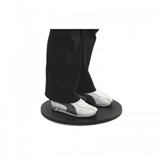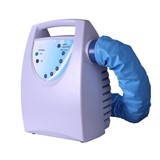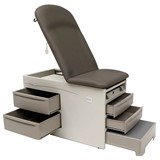I. Introduction
Examination tables are essential medical furniture designed to provide a stable and comfortable platform for patients during medical examinations and procedures. As advancements in healthcare technology continue to shape the industry, smart examination tables have emerged as a significant innovation. These state-of-the-art tables integrate diagnostic devices and real-time patient monitoring features, revolutionizing the way healthcare providers conduct examinations and deliver patient care.


Find the right Examination Table
Compare quotes from expert Australian suppliers and make the best choice. It's free, quick and easy!
II. Smart Examination Tables with Integrated Diagnostics and Patient Monitoring
A. Integration of Diagnostic Devices:
Smart examination tables are equipped with advanced diagnostic devices that seamlessly integrate into the table's structure. These devices may include digital thermometers, blood pressure monitors, pulse oximeters, and even ECG machines. The integration of these diagnostic tools enables healthcare professionals to gather essential patient data directly from the examination table, streamlining the diagnostic process and reducing the need for additional equipment.
B. Real-Time Patient Monitoring Features:
One of the key benefits of smart examination tables is the incorporation of real-time patient monitoring features. Through the use of sensors and connected technology, these tables can continuously monitor vital signs such as heart rate, respiratory rate, and body temperature. The data collected is instantly transmitted to a centralized system or electronic health record, allowing healthcare providers to closely monitor the patient's condition throughout the examination.
C. Benefits of Smart Examination Tables for Healthcare Providers:
The adoption of smart examination tables offers numerous advantages to healthcare providers. Firstly, the integration of diagnostic devices simplifies the examination workflow, saving valuable time during assessments. Secondly, real-time patient monitoring enhances patient safety, as any critical changes in vital signs can be promptly identified and addressed. Moreover, the digital documentation of diagnostic data improves accuracy and reduces the likelihood of errors during manual record-keeping.
D. Considerations for Implementing Smart Features:
While the benefits of smart examination tables are evident, healthcare facilities must consider certain factors before implementing these advanced features. First and foremost, there is a need for appropriate staff training to ensure healthcare professionals can efficiently utilize the new technology. Additionally, the cost of acquiring and maintaining smart examination tables should be carefully evaluated to determine the feasibility of integration within the facility's budget. Ensuring data security and patient privacy is also paramount, necessitating robust cybersecurity measures to safeguard sensitive medical information.
III. AI-Powered Features for Improved Decision Support and Diagnoses
A. Role of AI in Examination Tables:
- AI (Artificial Intelligence) serves as a transformative technology in the field of healthcare, including examination tables.
- AI integration in examination tables involves the use of advanced algorithms and machine learning to process and analyze patient data.
- It enables examination tables to go beyond conventional functionalities and offer intelligent decision support.
B. AI-Driven Decision Support Systems:
- AI-driven decision support systems on examination tables assist healthcare professionals in making more informed clinical decisions.
- These systems can analyze a vast amount of patient data, including medical history, test results, and relevant research, to provide valuable insights.
- By leveraging AI's analytical capabilities, examination tables can offer potential diagnoses and treatment recommendations.
C. Enhancing Accuracy and Efficiency in Diagnoses:
- AI-powered examination tables enhance the accuracy of diagnoses by minimizing human error and bias in the diagnostic process.
- The technology can identify subtle patterns and markers in medical data that might be challenging for human practitioners to detect.
- By streamlining the diagnostic process, AI contributes to improved efficiency in patient care and reduced diagnosis timeframes.
D. Addressing Concerns and Ensuring Patient Safety:
- The implementation of AI in examination tables raises concerns about data privacy and security.
- Manufacturers and healthcare facilities must prioritize data protection to safeguard patient information from unauthorized access.
- Ensuring transparency in AI algorithms and providing clear explanations for diagnostic recommendations is crucial to gaining trust from healthcare professionals and patients alike.
IV. Incorporating Telehealth Capabilities and Virtual Consultations
A. Telehealth Integration in Examination Tables
In the ever-evolving landscape of healthcare, the integration of telehealth capabilities into examination tables has emerged as a transformative advancement. Telehealth refers to the use of telecommunications technology to deliver remote healthcare services, and its seamless integration into examination tables opens up new avenues for patient care and medical consultations.
To enable telehealth capabilities, modern examination tables are equipped with built-in cameras, microphones, and speakers. These technological features facilitate real-time video and audio communication between patients and healthcare providers, regardless of their physical locations. Such integration allows for virtual medical consultations and follow-ups, breaking down geographical barriers and improving healthcare access for patients in remote areas or with mobility challenges.
B. Facilitating Remote Consultations
One of the key benefits of telehealth-enabled examination tables is the facilitation of remote consultations. Patients can connect with their healthcare providers for routine check-ups, post-operative follow-ups, or even initial assessments without the need for in-person visits. This not only saves time and travel expenses for patients but also optimizes the utilization of healthcare resources.
For healthcare providers, the ability to conduct virtual consultations enhances their efficiency, allowing them to attend to a larger number of patients within a given timeframe. Moreover, telehealth consultations can contribute to reduced waiting times, leading to higher patient satisfaction levels.
C. Advantages and Limitations of Virtual Healthcare
Telehealth integration in examination tables offers various advantages, but it also comes with certain limitations. Advantages include increased patient access to healthcare, improved healthcare delivery in remote areas, and reduced exposure to contagious diseases during outbreaks. Telehealth consultations can also be more convenient for patients, leading to better compliance with medical advice and treatment plans.
However, it is essential to recognize the limitations of virtual healthcare. Certain medical conditions may require physical examination or in-person assessments that cannot be fully replaced by telehealth consultations. Moreover, technical issues such as connectivity problems or system malfunctions may hinder the smooth execution of virtual consultations. Healthcare providers must exercise caution when deciding which cases are suitable for telehealth and when an in-person visit is necessary.
D. Ensuring Privacy and Security in Telehealth Features
With the increasing reliance on telehealth capabilities, ensuring the privacy and security of patient data and communication channels is of utmost importance. Healthcare providers and manufacturers must comply with strict data protection regulations and implement robust security measures to safeguard patient information.
End-to-end encryption of data, secure authentication protocols, and regular security audits are some of the key measures that should be implemented to protect the confidentiality of telehealth consultations. Additionally, healthcare professionals must adhere to ethical guidelines concerning patient consent, confidentiality, and data sharing.


Find the right Examination Table
Compare quotes from expert Australian suppliers and make the best choice. It's free, quick and easy!
V. 3D Imaging and Visualization Enhancements for Accurate Diagnoses
A. Implementation of 3D Imaging Technology
3D imaging technology has emerged as a revolutionary tool in modern healthcare settings, offering advanced visualization capabilities that significantly enhance the diagnostic process. This section explores the implementation of 3D imaging in examination tables, shedding light on its technical aspects and potential benefits.
Utilization of Cutting-Edge Hardware and Software
- The integration of high-resolution sensors and cameras into examination tables enables the capture of precise 3D images.
- Specialized software processes the collected data to create detailed visual representations of anatomical structures.
Seamless Integration with Existing Systems
- Manufacturers are designing 3D imaging technology to seamlessly integrate with healthcare facilities' existing electronic health record (EHR) systems.
- This integration streamlines the diagnostic workflow and ensures easy access to patient data alongside 3D visualizations.
B. Advantages of Enhanced Visualization in Examinations
The incorporation of 3D imaging in examination tables brings forth a multitude of advantages, revolutionizing the way medical professionals perceive and interpret patient conditions.
Comprehensive View of Anatomy
- 3D imaging provides a comprehensive and detailed view of anatomical structures, surpassing the limitations of 2D images.
- This comprehensive view aids in identifying abnormalities and subtle variations that might be overlooked with traditional imaging techniques.
Precise Measurements and Quantification
- Healthcare professionals can obtain precise measurements and quantifications from 3D images, enabling accurate assessment of lesions, tumors, or other abnormalities.
- This quantitative data assists in monitoring disease progression and treatment outcomes.
Enhanced Diagnostic Accuracy
- Improved visualization directly correlates to enhanced diagnostic accuracy, leading to timely and precise diagnoses.
- Medical practitioners can make well-informed decisions, thereby reducing the likelihood of misdiagnoses and unnecessary invasive procedures.
C. Impact on Treatment Planning and Outcomes
The integration of 3D imaging into examination tables goes beyond diagnostics; it profoundly impacts treatment planning and subsequently improves patient outcomes.
- Personalized Treatment Approaches
3D visualization facilitates a personalized approach to treatment planning, as healthcare professionals can better understand patient-specific anatomy and conditions.
Tailored treatment plans lead to more effective interventions, increasing the chances of successful outcomes.
- Enhanced Patient Communication
- With 3D images, healthcare professionals can visually illustrate medical conditions to patients, promoting better understanding and informed decision-making.
- Improved communication fosters a stronger doctor-patient relationship and encourages patient compliance with treatment recommendations.
D. Training and Education for Healthcare Professionals
As the implementation of 3D imaging becomes more prevalent, adequate training and education for healthcare professionals are crucial to harness its full potential.
Specialized Training Programs
- Institutions and manufacturers are offering specialized training programs to familiarize medical professionals with 3D imaging technology.
- Hands-on training ensures proficiency in interpreting 3D visualizations and effectively incorporating them into clinical practice.
Continuing Education and Skill Development
- Continuous education and skill development are essential to keep healthcare professionals up-to-date with advancements in 3D imaging and visualization.
- Workshops and conferences provide platforms for knowledge exchange and foster a culture of ongoing learning.
VI. Remote-Controlled and Voice-Activated Examination Table Functions
A. Remote Accessibility and Control Features
In the rapidly advancing landscape of healthcare technology, examination tables have undergone significant transformations to enhance patient care and streamline medical processes. One notable innovation is the integration of remote accessibility and control features in examination tables. This section will explore the benefits and considerations associated with this cutting-edge development.
- Enhanced Flexibility and Efficiency:
Remote-controlled examination tables allow healthcare professionals to adjust table settings and positions from a distance. This feature enhances workflow efficiency during examinations and procedures, reducing the need for manual adjustments and repositioning.
Healthcare providers can make real-time adjustments based on patient requirements, contributing to a seamless and personalized patient experience.
- Improved Patient Comfort and Safety:
Remote accessibility eliminates the need for patients to repeatedly reposition themselves during examinations, reducing discomfort and potential risks, especially for patients with limited mobility.
Healthcare professionals can precisely control the table's movements, minimizing the likelihood of accidents or injuries during critical procedures.
- Time-Saving Benefits:
With remote-controlled features, medical staff can quickly and effortlessly position patients for various imaging scans, diagnostics, or treatments, optimizing time management in busy healthcare settings.
This increased efficiency can lead to a higher patient throughput, ultimately improving the overall healthcare service delivery.
B. Voice Commands for Examination Table Operations
As technology continues to advance, voice activation has found its way into examination tables, offering a hands-free and seamless user experience. Here, we delve into the integration of voice commands and its impact on patient care and medical workflows.
- Streamlined Table Manipulation:
Voice-activated commands enable healthcare professionals to control the examination table through vocal instructions. This hands-free operation allows them to focus more on patient interactions and medical tasks, enhancing their overall productivity.
The simplicity of voice commands ensures ease of use, even for those with limited technical expertise.
- Reducing Cross-Contamination Risks:
Touch-based controls on medical equipment can act as potential sources of cross-contamination. By incorporating voice activation, the need for physical contact is reduced, promoting better infection control practices in healthcare settings.
- Customizable and Adaptable Solutions:
Voice-activated examination tables can be customized to recognize specific medical terms and commands relevant to various procedures, tailoring the system to suit the specific needs of different healthcare specialties.
C. Improving Patient Experience and Accessibility
The patient experience lies at the core of quality healthcare delivery. Remote-controlled and voice-activated examination table functions contribute significantly to enhancing patient comfort and accessibility.
- Minimizing Patient Anxiety:
The ability to adjust the examination table quietly and remotely can help alleviate patient anxiety, especially during procedures that require a calm and serene environment.
Reducing unnecessary physical contact with medical equipment can also foster a sense of trust between patients and healthcare providers.
- Catering to Diverse Patient Needs:
Remote-controlled features and voice commands cater to patients with varying physical abilities, making medical examinations and procedures more inclusive and accommodating.
Elderly or disabled patients may find these features particularly beneficial, as it ensures their dignity and autonomy are respected throughout their healthcare journey.
D. Addressing Technical Challenges and Reliability
While the integration of remote and voice-activated functionalities presents numerous advantages, healthcare providers must also be aware of potential challenges and ensure system reliability.
- Connectivity and Network Stability:
Remote accessibility relies on stable network connections, and any disruptions may hinder the functionality of the examination table. Implementing robust network infrastructure is crucial to ensure seamless operation.
- User Training and Familiarization:
Healthcare professionals must receive adequate training to operate the examination table's remote and voice-activated features confidently. Proper training minimizes errors and optimizes user experience.
- Redundancy and Backup Solutions:
To maintain uninterrupted access to table functions, having backup mechanisms and redundant systems in place can mitigate risks associated with technical failures.
Conclusion
Collaborative technologies and multi-functional examination tables represent a progressive shift in the healthcare industry, fostering effective teamwork and enhancing patient care. By leveraging these innovations thoughtfully and accounting for practical considerations, healthcare facilities can elevate their standards of care and create a more efficient and patient-centric environment.

















